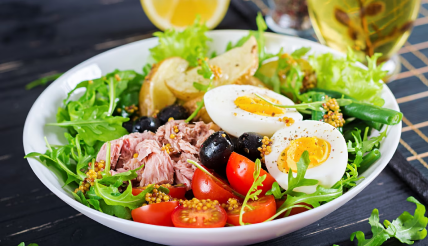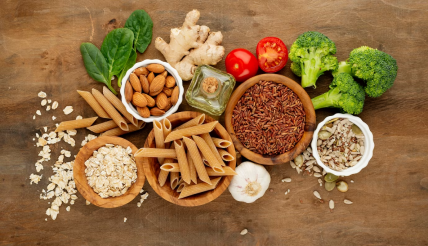You may also like…
What are energy dense foods?
The energy density factor
Energy density refers to the number of calories packed into a given volume of food. Some foods are calorie-dense, meaning they deliver a substantial calorie load in a small serving, while others are calorie-sparse, offering fewer calories in a larger volume. When striving for weight loss, opting for low-energy dense foods can be a strategic move.
Hydration and Satiety
Fruits and vegetables are prime examples of low-energy dense foods. They possess a high water and fiber content, providing volume and weight without a significant calorie load. This unique combination of properties makes them a cornerstone of successful weight loss strategies. While most fruits align with a healthy diet, be cautious of concentrated forms of sugar like canned syrup-containing fruits or dried fruits. Opt for whole fruits, like slices of a juicy orange or a luscious peach.
Incorporating vegetables such as salad greens, asparagus, carrots, tomatoes, broccoli, and zucchini into your meals can also contribute to a sense of fullness and lightness. These nutrient-packed options are not only kind to your waistline but also offer a wealth of vitamins and minerals.
The Fiber Advantage
High-fiber foods do more than provide volume; they also take longer to digest, promoting a feeling of fullness on fewer calories. Vegetables, fruits, and whole grains are all rich sources of fiber. When it comes to grains, opt for whole grains over refined varieties. Whole-wheat bread, whole-wheat pasta, oatmeal, brown rice, and whole-grain cereals are excellent choices. These whole grains are not only higher in fiber but also brimming with essential nutrients, making them a wise addition to your diet.
Understanding Fat
Fat is known for its high energy density. Foods containing natural fats or those with added fats tend to be calorie-dense compared to their leaner counterparts. However, it's important to note that not all fats are created equal. Healthy fats, found in nuts, seeds, oils like olive and flaxseed, and safflower oils, offer essential nutrients and can be part of a balanced diet. Nevertheless, it's prudent to limit your intake of saturated and trans fats, commonly found in items like butter and shortening.
Navigating Sweets
Sweets are another category often high in energy density. Opt for sweet treats that are low in added fats and boast healthy ingredients such as fruits, whole grains, and healthy dairy. Consider indulging in options like fresh fruit paired with low-fat yogurt, cookies crafted from whole wheat flour, or a modest serving of dark chocolate.
In conclusion, while portion control remains a valuable tool in your weight management arsenal, understanding and incorporating the principles of energy density can further enhance your efforts. By choosing low-energy dense foods, you can savor delicious, satisfying meals while working toward your weight loss goals. Remember, achieving a healthier you is not just about eating less; it's about eating smart.
Powered by Froala Editor






